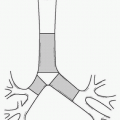QA/QI General Principles
Michael A. Bruno
Hani H. Abujudeh
In 1999, the Institute of Medicine (IOM) released its first report on medical errors and their management entitled To Err Is Human: Building a Safer Health System. This seminal publication exposed a previously unappreciated epidemic of serious and often lethal medical mistakes leading to the present “Quality and Safety Revolution” in health care. The report estimated, for example, that in the calendar year of 1997, at least 44,000 and possibly as many as 98,000 hospitalized Americans died as a result of errors or negligent care. The new IOM data on the magnitude of this problem came as a surprise to the medical profession and, to the public, revealed a shortfall of effective data gathering on medical errors. With little related research or experience to draw on, physicians and other health care professionals looked to other industries for guidance, specifically to those where safety was a primary consideration, and whose operations required systematic and comprehensive data gathering, analyses of risk factors, and optimization of “best practices” to minimize errors. Notably, the nuclear power and aviation industries, among others, have had an extensive literature in quality optimization and safety management for decades.
In more than 16 years since the IOM report was issued, quality and safety has developed as a field of scholarship and practice in its own right, spurred on by a second IOM monograph, Crossing the Quality Chasm: A New Health System for the 21st Century, published in 2001, which established much of the agenda for the fledgling quality movement. Since that time, governmental and nongovernmental agencies have been developed and lavishly funded to support research into quality improvement methodologies and best practices as well as the development of metrics and standards for health care and dissemination of quality improvement data throughout the health care industry. Governmental health care reform efforts including the Affordable Care Act (ObamaCare) have cantered on the methodologies and concept of continuous quality improvement (CQI) borrowed from other industries and incorporated these as an underlying structural feature of health care reform. Indeed, the application of CQI concepts and methods from industry to health care has, in turn, spawned a new subindustry, with widespread revolutionary ramifications from hospital review and accreditation to professional training and certification, including maintenance of certification, and as a basis for stratifying payments made to physicians and hospitals for medical services rendered. A parallel premium placed on transparency and openness is leading to various quality measures being available to patients and payers as they decide where and from whom health care services should be obtained in the local marketplace. The overarching importance of quality and safety and its escalating impact to the health care industry and economy will only continue to grow as health care reform progresses in the years and decades ahead.
Creating a “Culture of Safety and Quality”
As the model for quality management shifted away from a punitive response to errors (with perverse incentives for hiding errors) to an analytical and nonpunitive approach (which facilitates discovery of errors), radiology departments have embraced the concept of the “Culture of Safety and Quality,” by adopting a few overarching goals originally proposed by the IOM. The goal is to promote health care practices that are
1. Safe: protecting patients from injury and avoidable complications—a first priority
2. Effective: evidence-based practice, including refraining from providing services with no benefit to the patient (e.g., overutilization of imaging)
3. Efficient: Quality practices avoid waste, including that of people’s ideas and energy.
4. Equitable: Care is not dependent on patient’s ability to pay or other circumstantial issues.
5. Timely: reduction of access and wait times, and other avoidable delays, that overlap both patient safety and customer satisfaction issues
6. Patient-centered: an altruistic approach to health care, focusing on the needs and well-being of the patient as the sole priority and not on the needs of the system, institution, or caregivers
Stay updated, free articles. Join our Telegram channel

Full access? Get Clinical Tree





